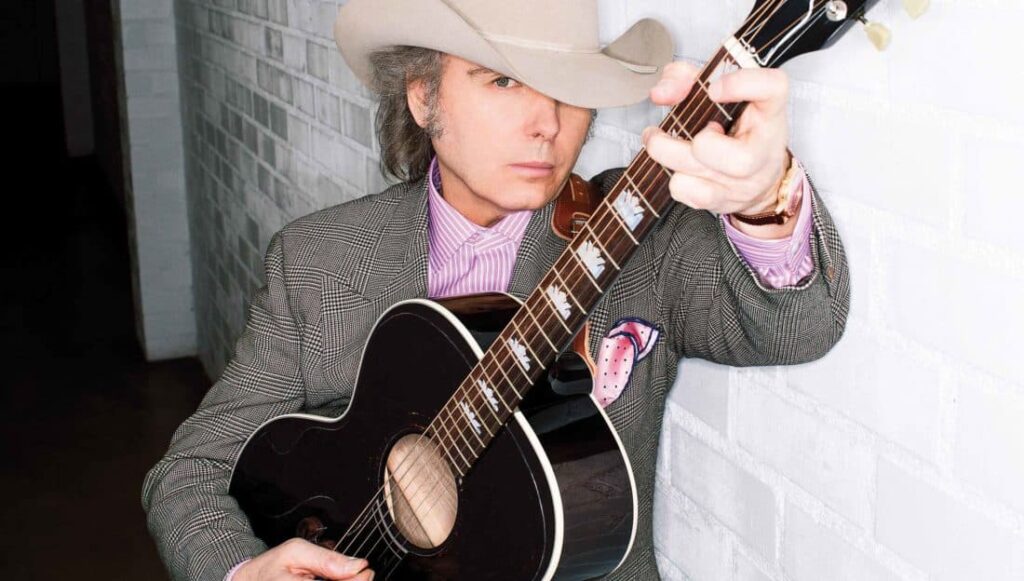
A Bluegrass Requiem: Dwight Yoakam’s “Purple Rain”
Some songs are so iconic, so deeply woven into the fabric of popular culture, that reimagining them seems almost sacrilegious. And then, there are artists bold enough, and with enough inherent artistry, to take on such a challenge and transform the familiar into something entirely new, yet still profoundly moving. This is precisely what Dwight Yoakam achieved with his striking bluegrass cover of Prince’s legendary “Purple Rain.” Released in 2016 on his album Swimmin’ Pools, Movie Stars…, this rendition wasn’t a chart-climber in the traditional sense, as it was a late addition to an album of reinterpreted Yoakam classics. However, its impact was immediate and profound, a genuine moment of musical alchemy that captivated critics and fans alike. It stands as a powerful, unexpected tribute, a testament to the universality of great songwriting.
The story behind Dwight Yoakam’s decision to cover “Purple Rain” is deeply poignant and inextricably linked to the tragic passing of Prince. On April 21, 2016, the world was stunned by the news of Prince’s death. Yoakam was in the studio, immersed in recording his bluegrass album, when he heard the news. The shock and sadness in the studio were palpable. As Yoakam himself recounted, there was a shared sense of bewildered grief for an artist who had touched so many lives. In that moment of collective melancholy, an idea sparked: “It just feels like we should record ‘Purple Rain.'” It was a spontaneous, heartfelt reaction, a cathartic release of emotion, that led to the recording of this unique tribute. What began as a spur-of-the-moment musical reaction became the closing track of an album otherwise dedicated to reimagining his own catalog. This unexpected inclusion transformed the album, giving it a profound, almost spiritual, coda.
The original “Purple Rain” by Prince is, of course, a majestic and enigmatic anthem, often interpreted as a plea for unity and understanding amidst a world of chaos and pain. It speaks of a longing for a pure, cleansing deluge that washes away sorrow and strife. In Dwight Yoakam’s bluegrass interpretation, that underlying melancholic beauty is stripped bare, revealing the song’s raw, emotional core. The frenetic energy of Prince’s electric guitar solos is replaced by the mournful cry of a fiddle and the intricate, grounded harmonies of bluegrass instruments. This transformation doesn’t diminish the song’s meaning; rather, it amplifies its sense of yearning and resilience. It brings the epic down to a more intimate, reflective level, making the plea feel more personal and deeply felt, like a prayer whispered in a quiet hollow amidst rolling hills.
What truly makes Dwight Yoakam’s “Purple Rain” resonate with older listeners is the unexpected fusion of genres and the profound respect shown to the original. For those who grew up with both the revolutionary sounds of Prince and the timeless traditions of country and bluegrass, this cover is a bridge between worlds. Yoakam’s distinctive, Bakersfield-influenced vocal twang brings an authentic, rootsy grit to a song born of funk and rock. It’s a masterful exercise in interpretation, demonstrating how a truly great song can transcend its original form and find new life in different musical landscapes. The raw, acoustic arrangement, with its emphasis on traditional instrumentation, creates a sound that feels both ancient and utterly contemporary. It’s a reminder that true emotion knows no genre boundaries, and that sometimes, the most surprising combinations yield the most beautiful results.
This version of “Purple Rain” isn’t just a cover; it’s a conversation across musical eras and styles, a poignant eulogy, and a testament to the enduring power of music to connect us, even in grief. It’s a song that speaks to the shared human experience of loss and the universal desire for solace, all delivered through the familiar, comforting sound of a master country artist channeling a rock and pop legend. For many, it offers a fresh perspective on a beloved classic, inviting reflection on how art can honor the past while forging new paths, leaving a lasting impression long after the final notes fade.